|
The idea with the miniature books series is to create a story that will only truly be complete if found; to illustrate it by the person's experience of its finding. Miniature books are made and a line from an existing story of mine, or a new site-specific work, is written in the front to become the first line of the story in the book. The and the ghosts so silver address and a stamp are then put in the back of the book with instructions to please complete and return if found. So far books have been hidden at a story reading in Bristol, the Port Eliot literary festival in Cornwall, as well as in random places in towns and villages across the country. It is always a delight to open the envelopes as they are returned and see how people have taken a line that was originally meant one way, but for them it has become something completely different - the trigger for their own story, which in turn develops my story beyond how I could have done so myself. I hope that by finding these books people will think differently about their surroundings and expectations of random things they might find in the street; that they might realise that stories are threaded through even the most mundane parts of our lives. 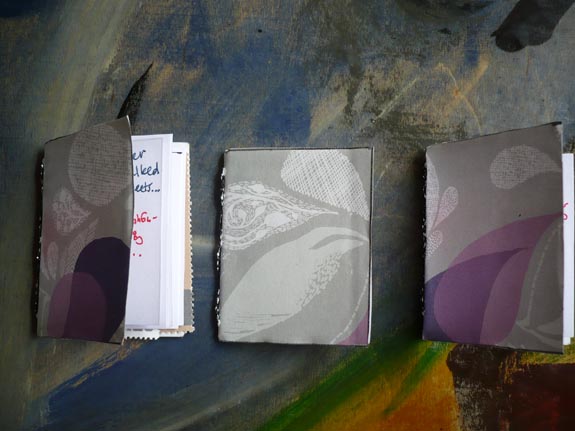 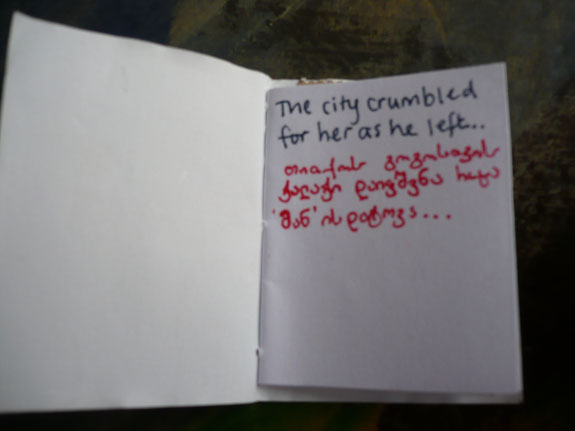 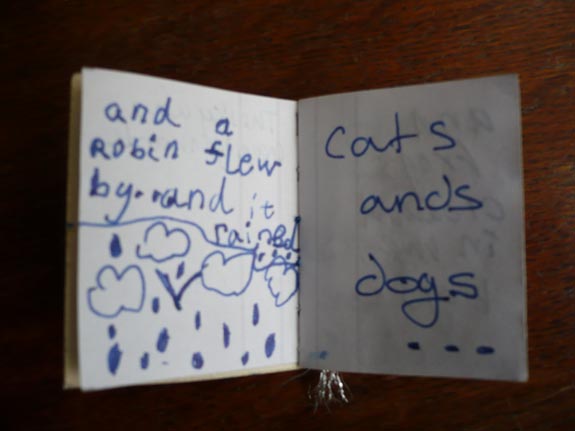 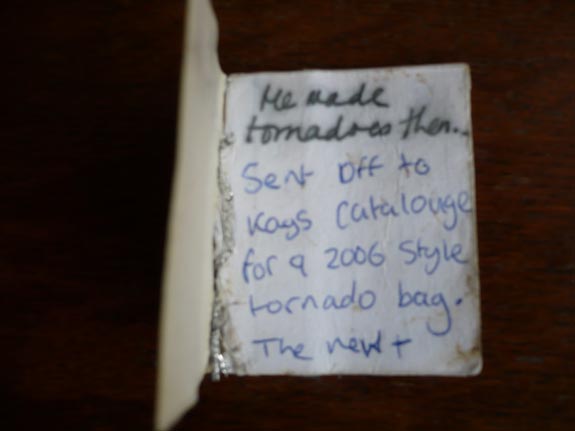 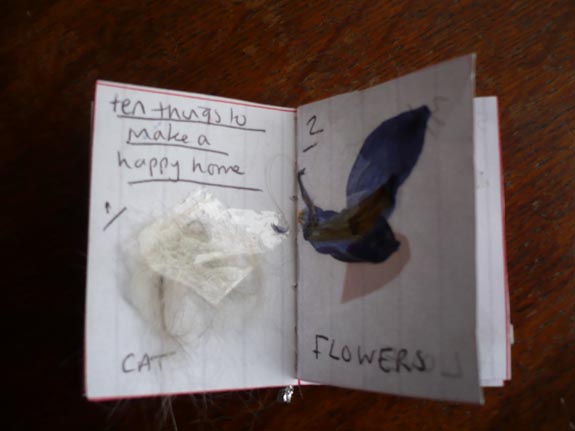
This project is currently expanding worldwide and the returned books are becoming part of my miniature library of the lost and found, on display at the Port Eliot literary festival this year. Books have been hidden as part of an event in a gallery in Belgrade, Serbia, as well as in Tbilisi, Georgia and soon Moscow, Montreal, Berlin, Paris and Nashville. They also feature as part of my commission for the Journey of Exchange exhibition at Oxford House, Bethnal Green, London, July 2007. For this project I write fragments of stories or stand-alone sentences on old torn bits of A4, or old receipts, so they look like the sort of thing anyone would find in an uncleared-out pocket. I then go and put them in the pockets of new clothes in shops, so that people can create a history from a seemingly new garment. I developed this idea and began to leave notes in people's pockets as they walked along - almost like a reverse of pick-pocketing. There have as yet been no contact details left on these pieces of paper as I think in this case anonymity is key to truly interacting personally with the reader - almost as if the note could have been something they left themselves and forgot about, and with the stories left in new clothes an identity could hinder the creation of an imaginary history of this garment. I believe that the imagination works most fruitfully when triggered and encouraged rather than directed or controlled. This is my longest running project started about five years ago when I was living in a small town in Dorset, and first became interested in new ways of illustrating my writing and interacting with the reader. I split up stories in fragments on post-it notes and flyered them around the town in both obvious and unusual places. I then went back to see what had happened to them. Sometimes they had simply washed away, but once one had been put up on a notice board and old ladies were discussing it! I love the idea that people can find part, or the whole, of a story, but it doesn't matter which; each fragment has the potential to interact personally with its finder in that moment. I use post-it notes as they are normally purely functional stationary that you would expect to find something such as a discarded boring list on. This again subverts our expectations of the things we discard or find on a daily basis - our expectations of when we are going to discover a story or read a work of fiction. 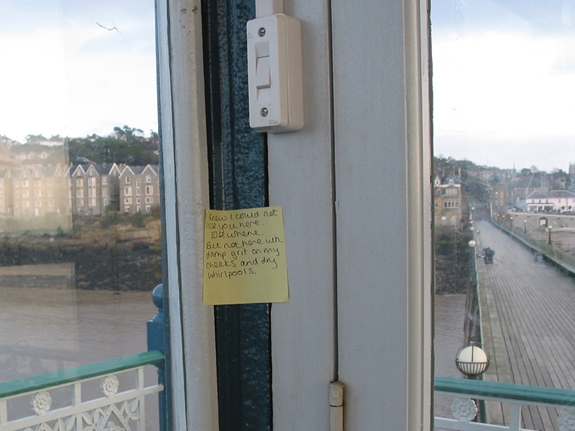
I get continually frustrated with the potential of graffiti as a way of presenting creative writing, but how it is so often about tagging, identity and permanence. My ephemeral graffiti uses materials such as glitter on snow, leaves, twigs and swirled dust and mud to write a phrase that could connect a person with that place in a specific moment. Its anonymity and ephemerality is important. It is not about marking, but interacting with a place and being part of its natural process of change. 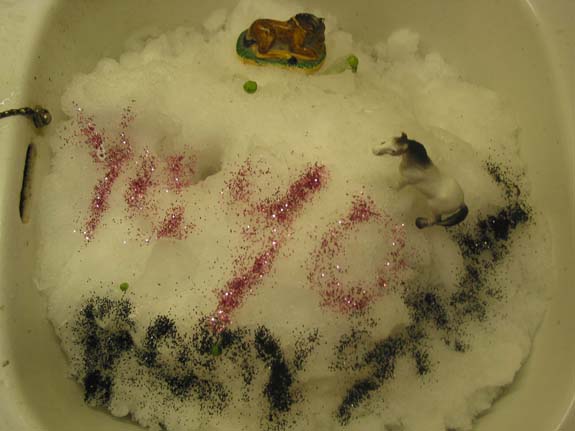 I think a lot about how the reader collaborates with the writer in how the work eventually fulfills its potential. By finding the work in its site-specific context the reader is an integral part of its completion. I moved to Berlin then Paris and decided to see if I could get someone to follow fragments of a story as I left them whilst walking around the city, exploring its stranger less known parts. Could the physical act of this site-specific storytelling and the location of a fragment help the story be communicated in a way that partly overcomes the language barrier? By making the reader part of the process of the story, and possibly leaving them to be the conclusion of the story, I was in a way letting them create a story from the remnants of my ideas - almost like echoes of what it might have been, but that any number of new interpretations were equally as valid. The treasure trail pieces are just a slight variation of these following works. Here clues and fragments of a story are left dotted around the city for a person to find and create their own story illustrated by the places they have discovered. At the end of the trail I leave something significant to the story I wrote. And the ghosts so silver is planning a series of secret treasure hunts for next year where we will arrange a start location and leave details at the end so that we can have a record of all the stories created from different interpretations of the same story read/ objects found. Commissions are also taken for treasure trails relating to specific events.  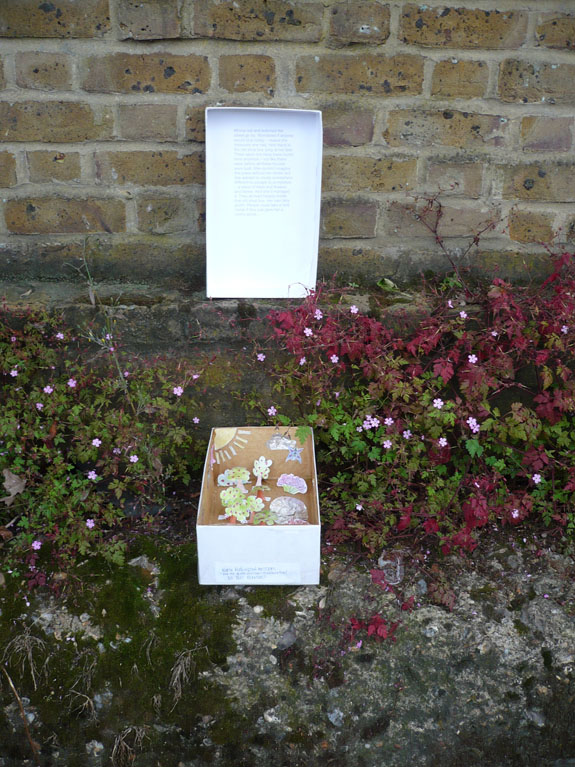 
This is a collaborative project currently in development in both Belgrade, Serbia (2009) and Tbilisi, Georgia that I would like to expand in other cities worldwide. So many cities have had to rebuild themselves again and again over hundreds of years and this project works on the premises that therefore the only place that really contains the true history of a place is its soil. That secret histories and wonderful stories have simply dissolved into it over the centuries. This project aims to recover the hidden personal history of a place, with various site-specific works by me and other artists/writers/musicians creating our own history for certain chosen places in the city, being left as an installation, be it a hidden story, sculpture or sound piece. This creates an interlinking guide to the stories that would never normally get told by a monument or in a museum and that now free to exist again within the city itself, can be brought to life by there being found by normal passers by. I am passionately interested in nature in relation to the city - how hidden places of greenery surprisingly emerge in very urban environments, often to be ignored. What could secretly be going on in these places - could they be a form of alternate reality, could someone exist almost feral within these places within places? I have developed this in my recent novel and my site-specific work in Belgrade and I am now developing it further. I am creating secret environments within cities, which people can find, enter, then discover a whole hidden fictional world which they can become part of. I have recently been thinking about the places from childhood that one loses the ability to create as an adult, such as the childhood dens one made in woods or even under chairs and sheets in the sitting room. By recreating a woodland den within the city, that when people enter find is full of the stories and fictional creations of a person, I hope to reconnect with this childlike sense of a personal space. This could include fragments of fiction pinned around, sound recordings, a hidden diary to be read and added to by the public, as well as found items and ephemera from the life of this person. The stories and items are based on research I carry out to do with hidden personal histories within the city. I strongly believe that the true history of a place is contained in its everyday places and personal stories rather than traditional monuments. I also believe that it can be transient - different layers of history emerging fleetingly at different times and this is why an ephemeral way of presenting such stories is important to me. They emerge organically and then can be absorbed back into the greater picture of how a city functions. Because of this everyday personal touch I use traditional crafts such as embroidery and things you would learn in art club at school to create items within the “den”- the “folk” art methods that are accessible to anyone, and because of this I am happy for people to leave personal mementos within the environment I create, so that at the end of its installation the work has evolved to become truly part of the city it seeks to illustrate and illuminate. These are large scale textile works gradually merging from recognised to obscure alphabets, from clear language to the secret codes a child might invent with their friends. I use embroidery as this traditional craft has in itself been used as an abstract way of communicating in different cultures throughout history. I am also working on smaller scale pieces incorporating found photographs. 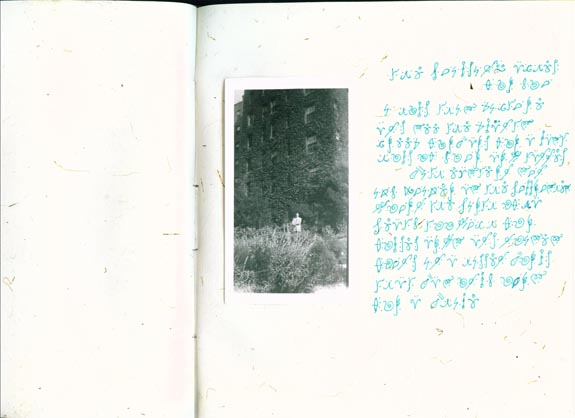
Using found photo albums I create a fictional story around the places and characters they contain, using text to illustrate the images rather than the other way round. 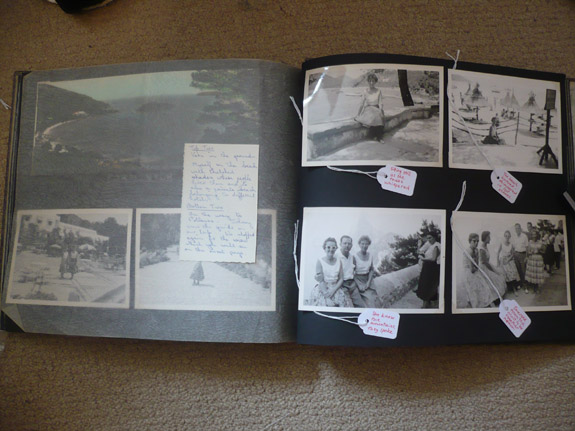
I create cabinets of curiosities from found and handmade objects, which are then labelled with fictional tags, leading the viewer on fictional trail around these seemingly unconnected items. 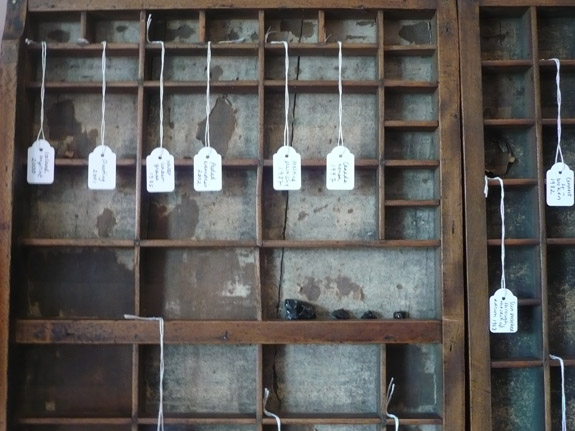 
And the ghosts so silver will soon be launching a limited edition of handmade books based on found photos of people and places I have never known. This will be a collaboration with illustrators too and the books will be available in a selection of independent bookstores or online. I am also working on a fictional travel book based on a selection of found ephemera from a lady's 1958 solo motoring tour of Europe. |